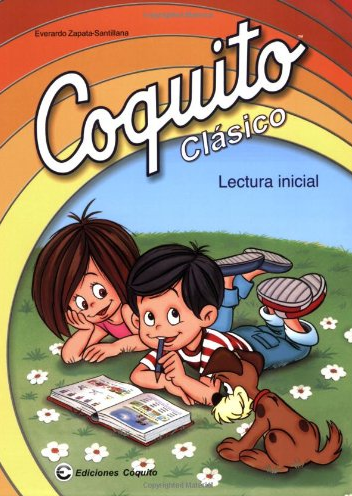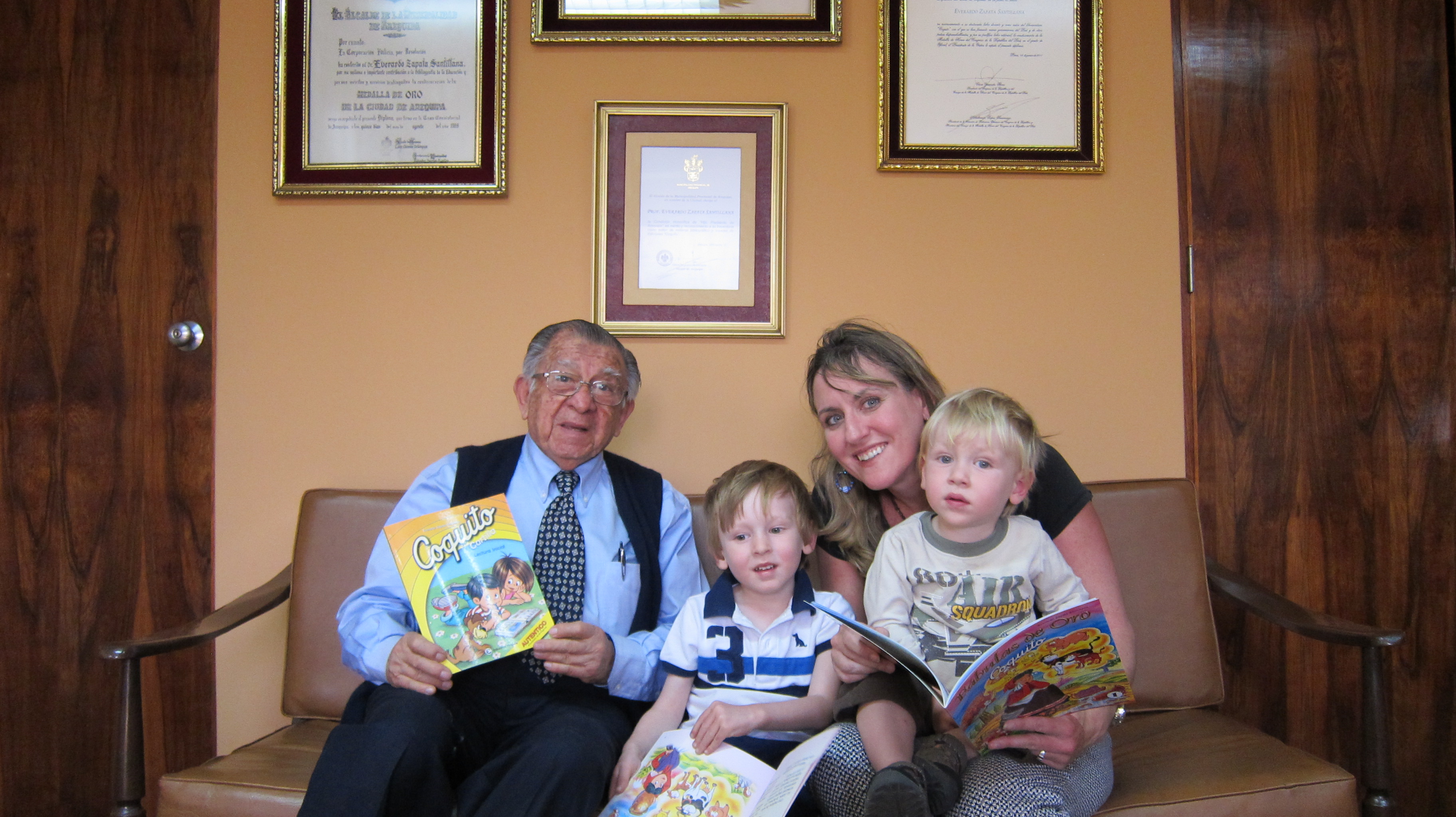Part of my plan for raising bilingual children has always included teaching them how to read and write in Spanish. I find it very discouraging that so few elementary schools offer foreign language education. It is shocking considering all of the recent studies that demonstrate the cognitive benefits of being bilingual. To make up for this shortfall in the public education system, my sons will have Spanish classes with me at home. I am doing some part time home schooling to make up for this major deficit in their education.
While I am a Spanish teacher, I was trained and credentialed for the high school level. Teaching my children how to read and write in Spanish has required me to learn some new methods and strategies. I was not in any hurry to teach my son how to read, but rather followed my child’s lead. When he started to ask me what signs said and began to sound out words on his own, I knew he was both interested and ready to learn.
 During our family trip to Peru last year, our children attended a pre-school part time, and I was able to stay and observe the classes. I wanted to learn the most effective strategies for teaching Spanish literacy skills. The teachers at the pre-school were wonderful at explaining the process and different activities used to teach reading. The method used throughout Peru, and in many other Spanish speaking countries, is known as the Coquito method. Created in 1955 by teacher Everardo Zapata Santillana, this method follows the syllabic structure of Spanish. The system is phonetic with children learning different phonemes and then how to string syllables together to form words and later sentences. It is a logical method for teaching the Spanish language. Mr. Zapata Santillana explains “El espanol se aprende en solo dos meses porque se lee como está escrito y se escribe como se escucha.” (“Spanish can be learned in only two months because it is read as it is written, and it is written as it is heard.”)
During our family trip to Peru last year, our children attended a pre-school part time, and I was able to stay and observe the classes. I wanted to learn the most effective strategies for teaching Spanish literacy skills. The teachers at the pre-school were wonderful at explaining the process and different activities used to teach reading. The method used throughout Peru, and in many other Spanish speaking countries, is known as the Coquito method. Created in 1955 by teacher Everardo Zapata Santillana, this method follows the syllabic structure of Spanish. The system is phonetic with children learning different phonemes and then how to string syllables together to form words and later sentences. It is a logical method for teaching the Spanish language. Mr. Zapata Santillana explains “El espanol se aprende en solo dos meses porque se lee como está escrito y se escribe como se escucha.” (“Spanish can be learned in only two months because it is read as it is written, and it is written as it is heard.”)
I had planned to stock up on books and materials for teaching my children prior to visiting Peru and visited the Coquito store. Much to my surprise Mr. Everardo Zapata passed through the store on the way to his office. I was amazed! Even though he is now in his eighties, he still goes to work everyday improving upon Coquito and its teaching materials. I made an appointment to return the next day and was thrilled to be able to actually meet the man who created this wonderful method that has helped generations of children learn how to read. He was very kind and welcoming, explaining how to use the books that we purchased and even giving me books to bring back to the United States.
Now that I have been using the Coquito books and posters with my son, I am amazed at how easy it is to teach him Spanish using this process. My son loves to learn and actually calls our reading sessions “playing Coquito.” It is so easy for him to sound out words and string together sentences. The whole teaching and learning process has been a rewarding and fun experience, and I am fortunate to have discovered one of the best methods to help him achieve success.
*I am not an expert on the method of teaching using Coquito, but I have found it fairly straight forward and easy to use. You can also check out these two YouTube videos about the history of Coquito and its creator Everardo Zapata Santillana.
Coquito Clasico can also be purchased on amazon.com through La Tiendita.



How exciting! I actually have a couple of Coquito books, bought in Peru, that I have not yet made use of. Now would be the perfect time to start using them! Thanks for the info.
Yes,there is a Coquito Editorial in California. One of its employees,
Mr. Jaime Zapata has been very nice with my Coquito orders and he answers
right away to any questions you have. The website is : http://www.edicionescoquito.com
are they sold in the u.s? what age level do they begin?
Hi–
The Coquito Clasico which you can purchase on-line is for teaching reading. I am using it with my son who is 4 right now. Unfortunately, the other books are only in Peru.
Susan
We learn with coquito, and our kids too.
Nice article. Gracias.
Hello there, I m so happy I found you here, I m from Peru but not from Lima, I learned to read and write with coquito, now i live in the Usa, I m yrying to teach my children Spanish. I found Coquito Clasico lectura inicial, but it looks so different. From the book i used to have, can you give me the tittles of the book you brought from Peru? And the address from the store. I have a friend going to Peru. Thanks. Ma
My son, who is now 45, sent me this information. It brought a lot of memories. I taught my son and my daughter to read in Spanish with Coquito. Although I only use tthat book, which I bought in Colombia, my children learned to read in Spanish very well. I used it when they were three and four years old. It was a great asset for them when they went to school and learned to read in English. I used the same book with my granddaughter before she started kindergarden Tomorrow she will turn seven, but she still remembers her Coquito with the same love my children do. I was so happy to learn that the creator is still with us. I want to send him my most sincere admiration and give him thanks for giving us great memories about learning to read and write in Spanish.
Renee Baez